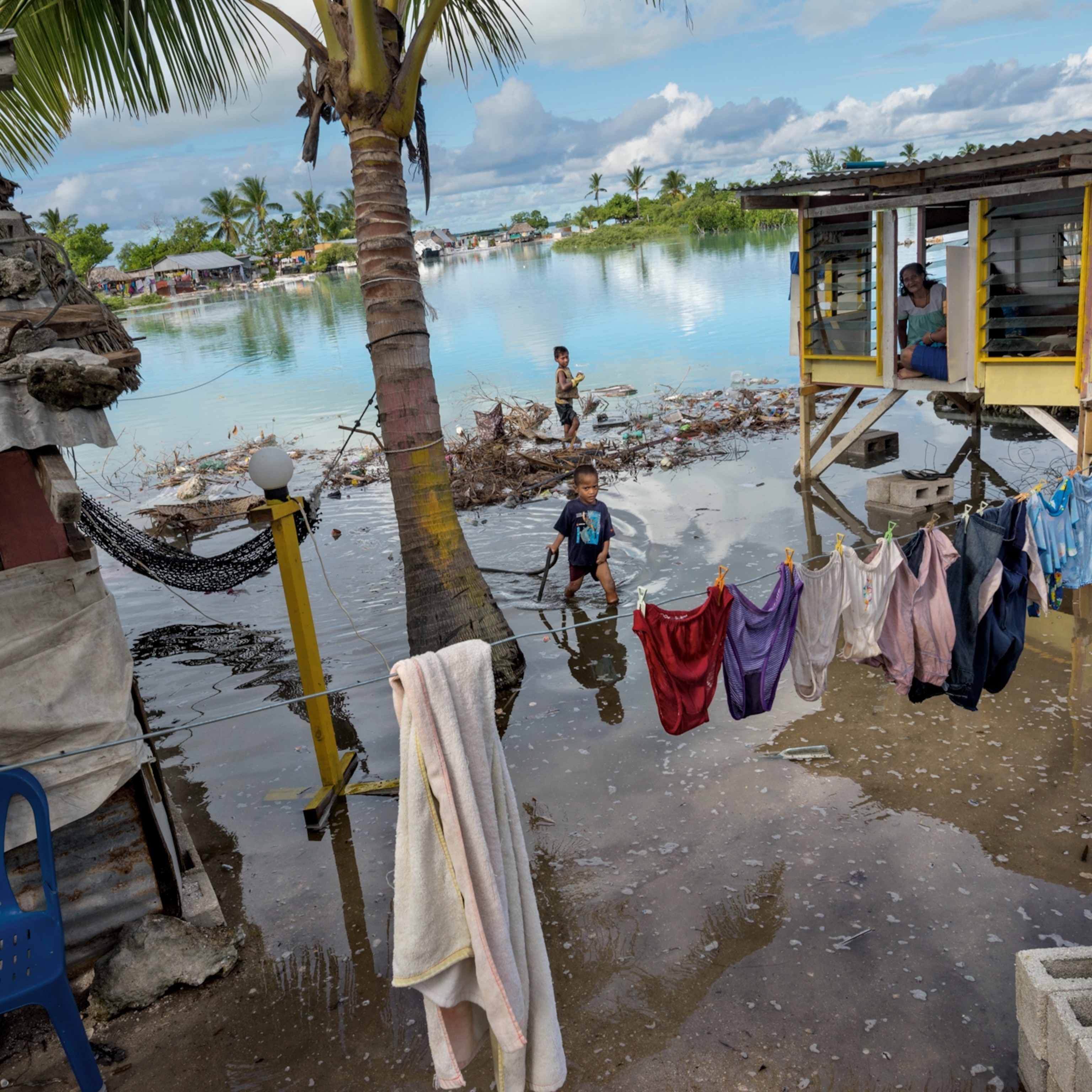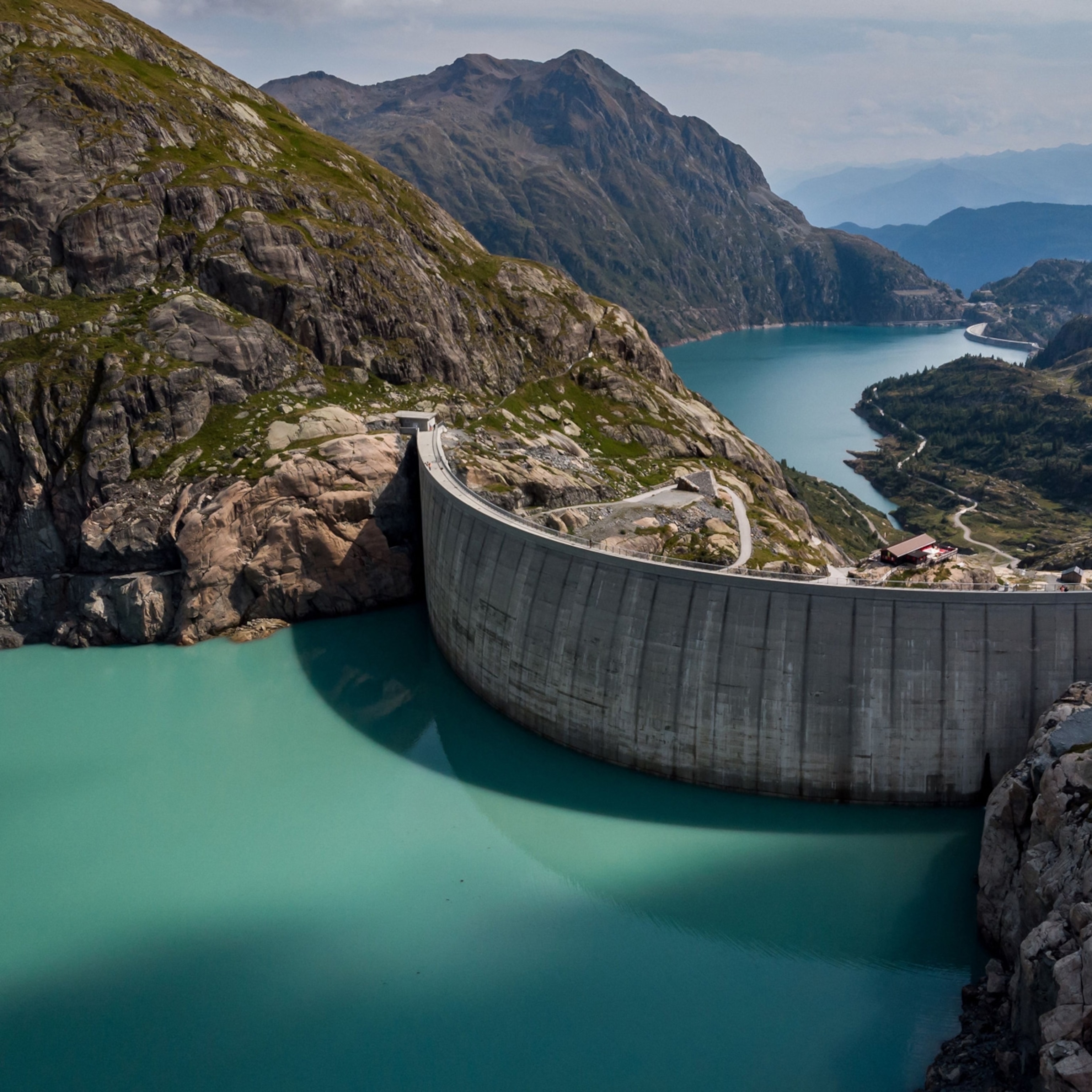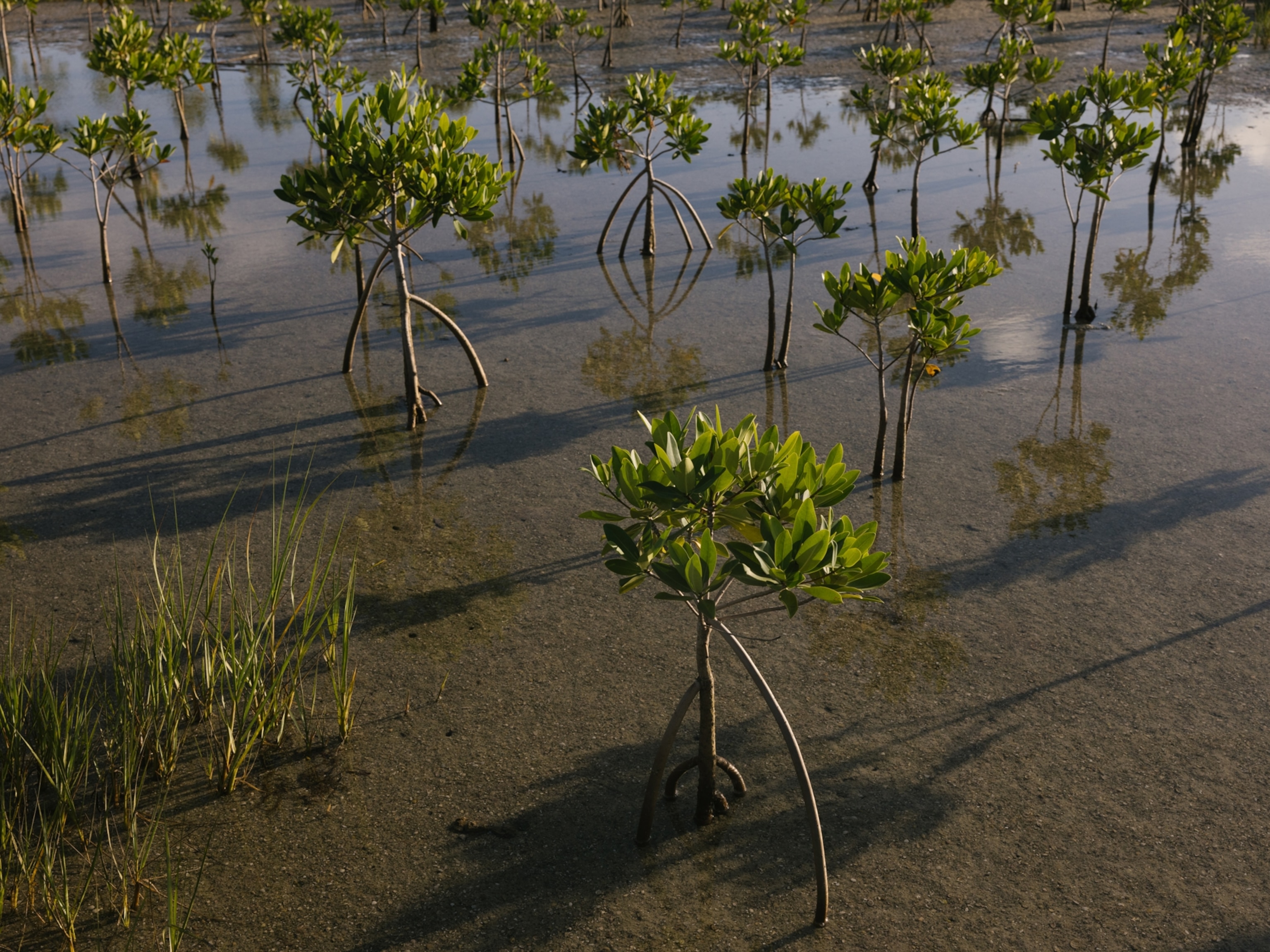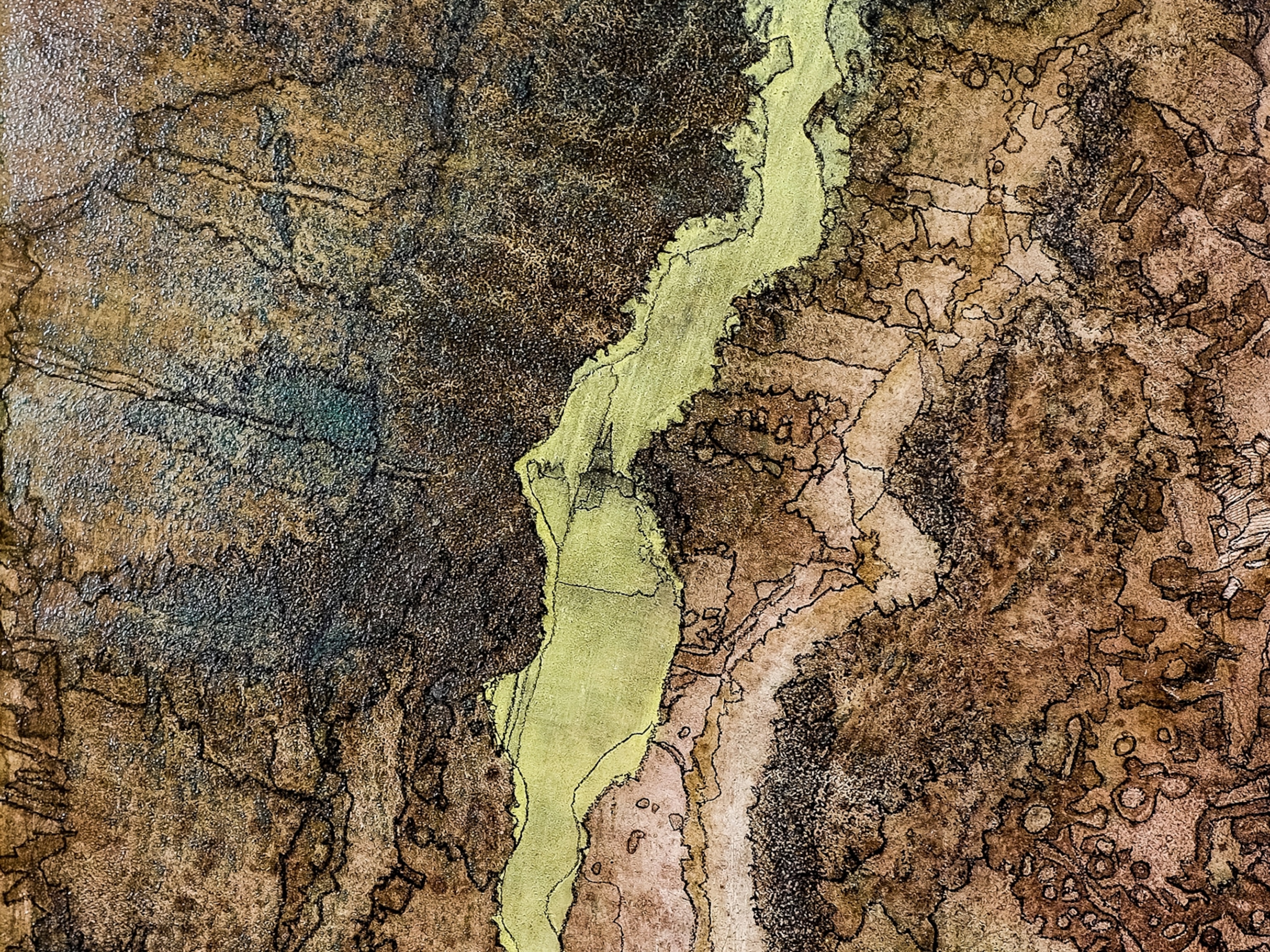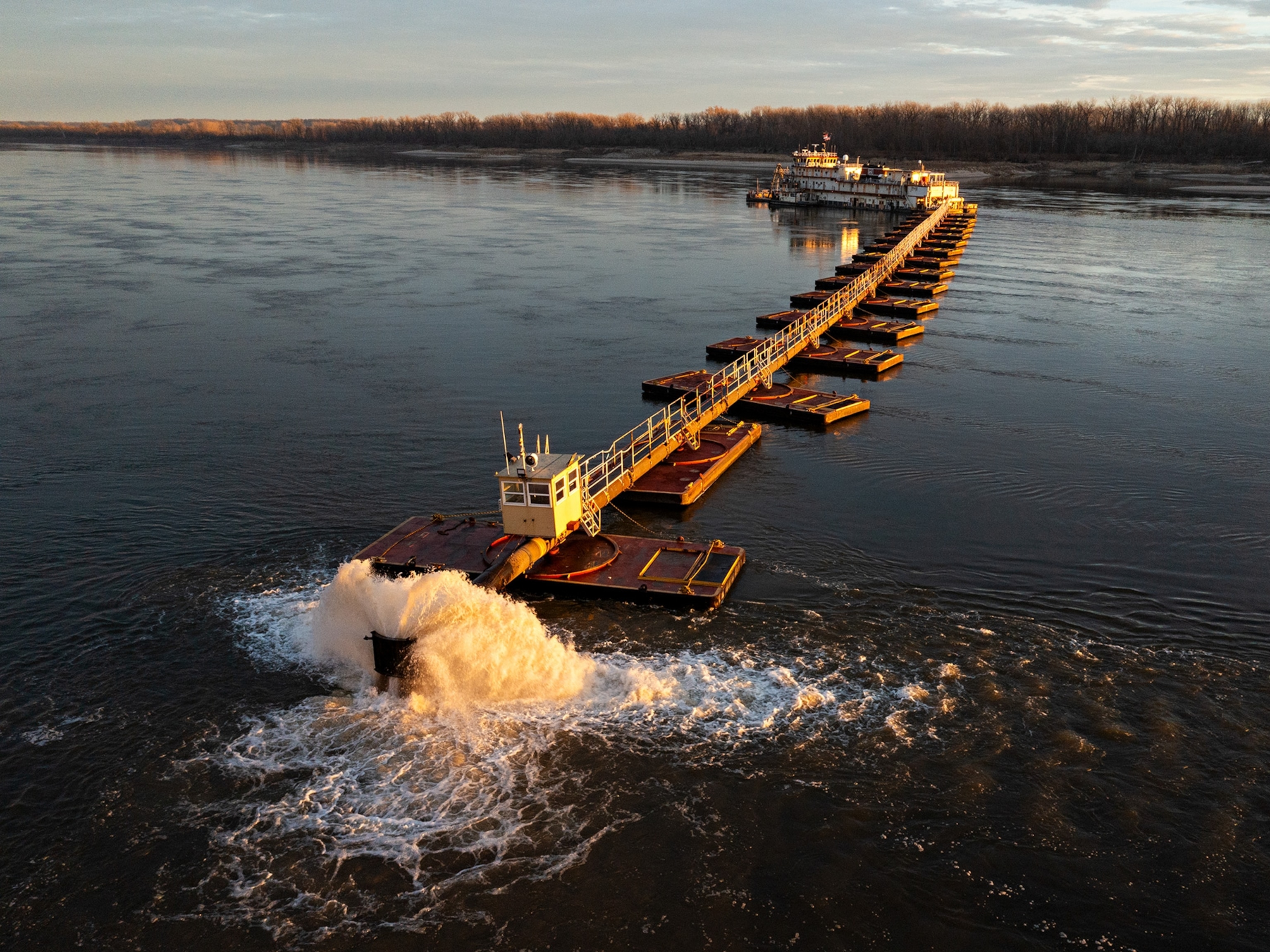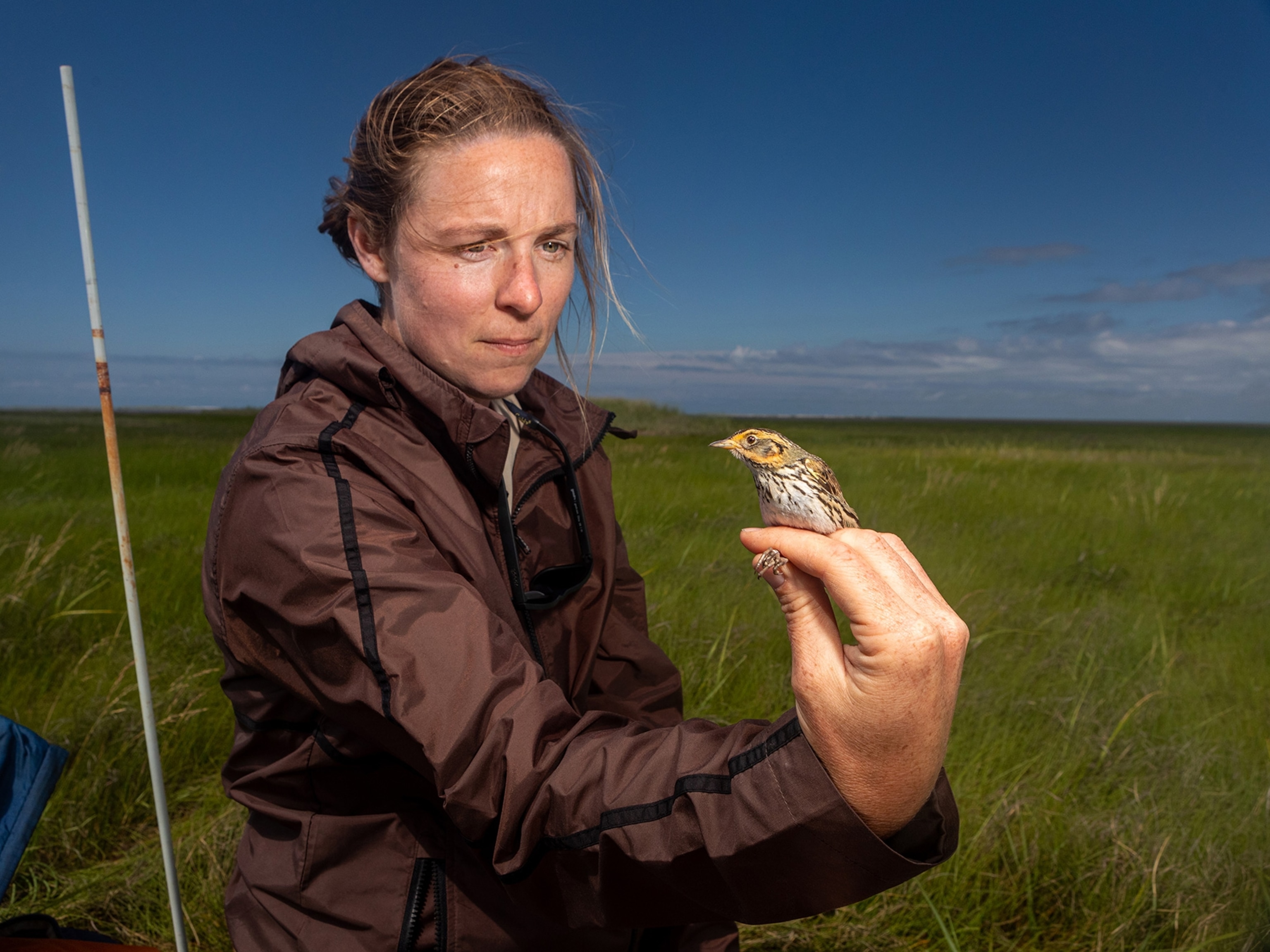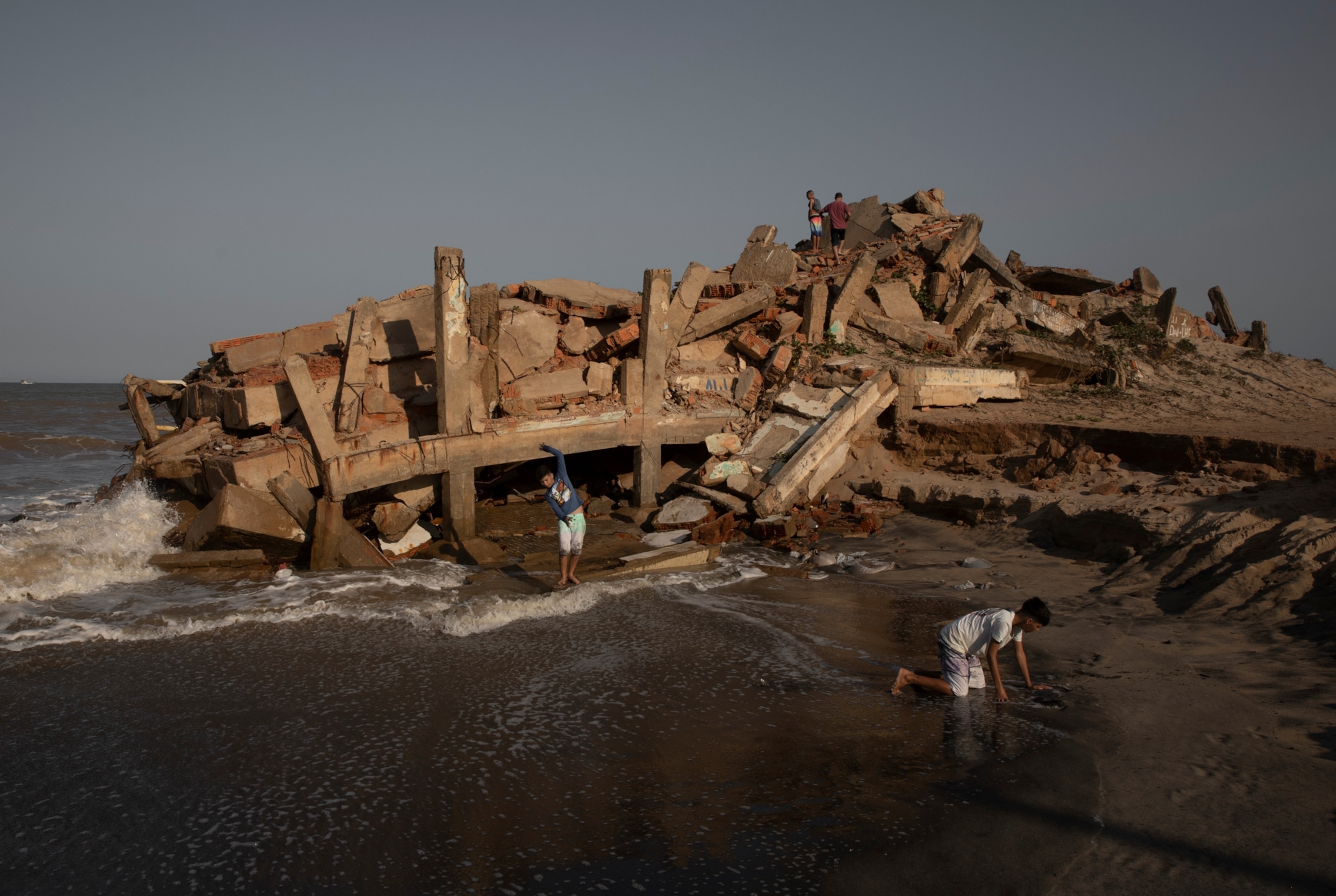
A rising sea is eating away this Brazilian town
The encroaching Atlantic Ocean is forcing existential losses in Atafona, a tragedy occurring around the world as climate change accelerates.
Atafona, Brazil — It is high tide, and the waves are getting closer to the oceanfront home where José “Nenéu” Rosa lives. He gets up from his lunch of sergeant fish, which he caught at dawn. Barefoot and shirtless, his skin tanned from 46 years under the sun, the fisherman checks the stability of a four-foot-tall rock wall surrounding his house that protects it from the turbulent Atlantic Ocean. He sighs in relief to see that his property is safe, at least for another day.
In the afternoon, strong gusts from the northeast blow up nine-foot waves that touch Nenéu’s wall. His five dogs bark, frightened, while the three cats hide on the roof. Nenéu climbs the barrier, partially collapsed by a storm about a year ago, and points to the bottom of the sea at the remains of the house where he and his seven fishermen brothers were born. It was taken by the ocean 30 years ago, he says, as well as two other of his residences in the years that followed.
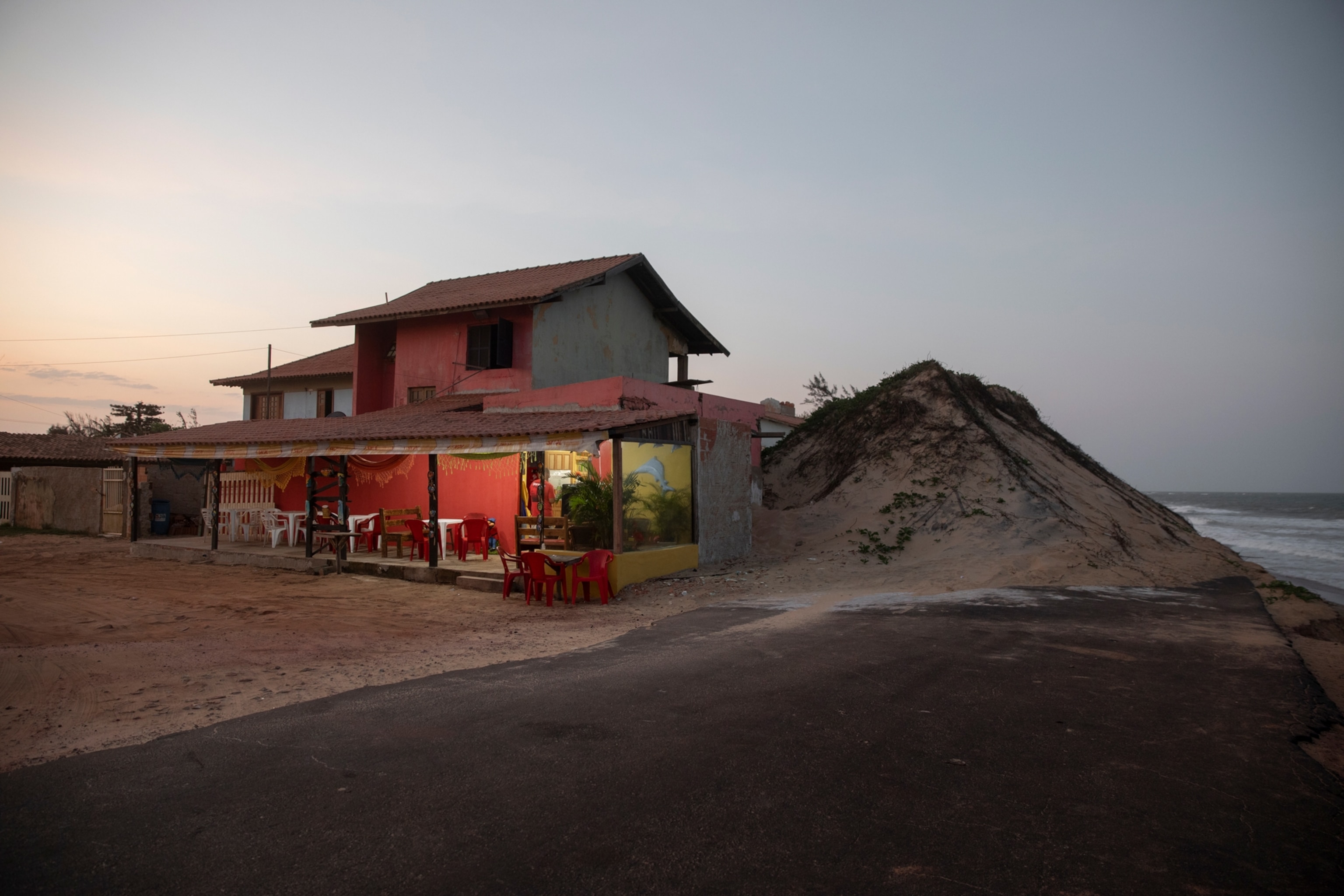
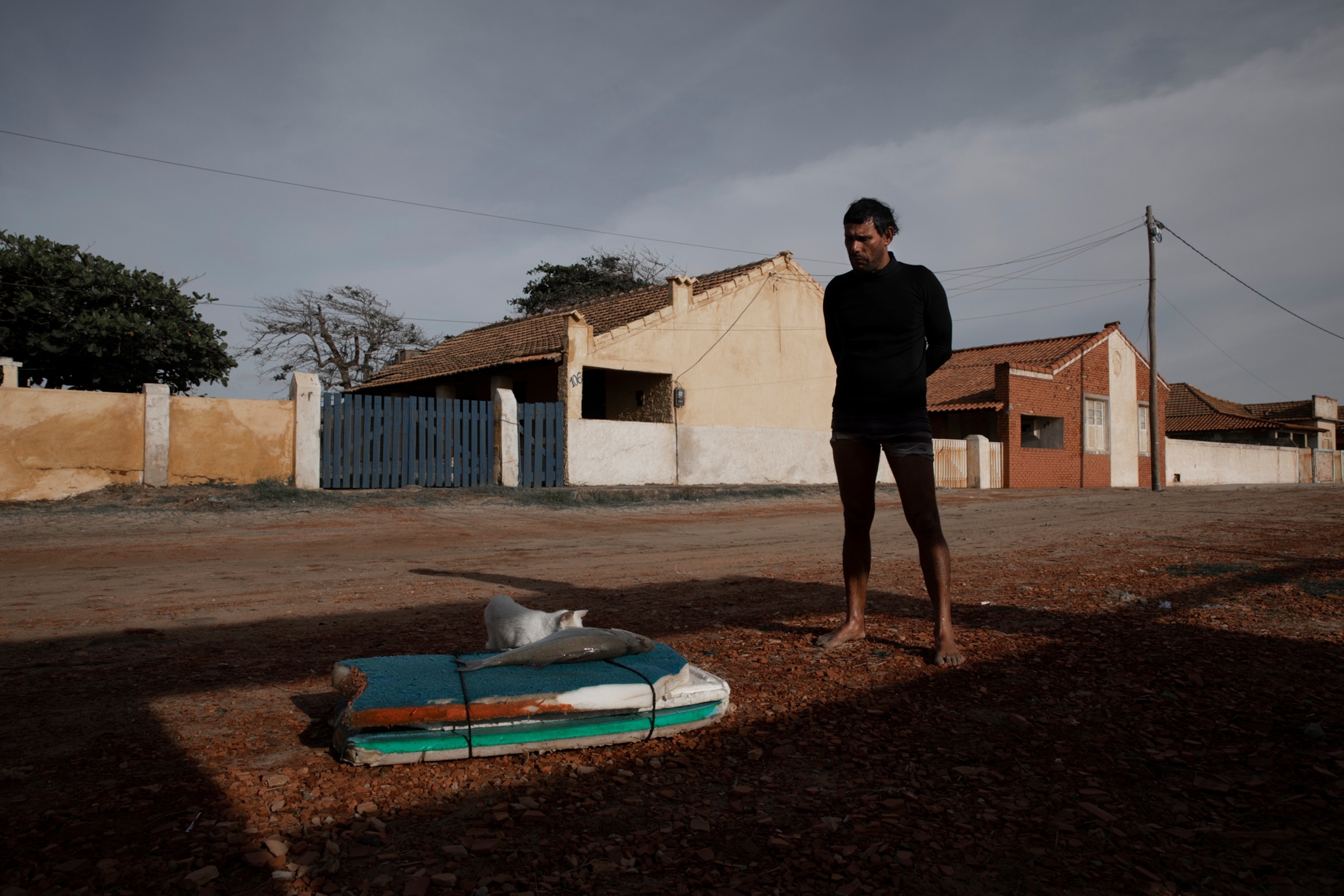
This time, he decided to fight back. Using the money he earned through fishing and making nets, Nenéu spent $3,000 on the rocks that he hopes will save his house, though he knows that the solution is ephemeral. “The sea isn’t wrong; it wants what belongs to him back,” says Nenéu. “It will swallow everything, but I’ll resist.”
This little Brazilian town of 6,000 people, 200 miles up the coast from the famed sands of Rio’s Copacabana and Ipanema beaches, is apocalyptic: abandoned, tumbledown houses, streets that end abruptly in sand. Atafona’s combination of an advancing ocean as climate change fuels sea level rise and eroding sands is a phenomenon that frightens its residents, intrigues scientists, and fascinates tourists eager to see the destruction. On the weekends, packed buses from nearby cities park at the beach, and visitors hop off to take selfies amidst the wreckage covered with graffiti that alludes to the end of the world, biblical quotes from the Book of Revelation, and messages warning “Jesus is coming back.”
Atafona is experiencing a relentless environmental tragedy that has been repeating itself in many other coastal regions around the world. In Texas, for instance, the southern city of Freeport sees 45 feet of erosion per year—an average that has continued over the last 30 years and is considered the most severe in the world. By 2050, even if humanity can control greenhouse gas emissions that superheat the planet, 200 million people globally could suffer from sea level rise and frequent floods, experts say. Assuming increasing emissions and a high level of glacier melt, in 2100 the number of people affected could reach 480 million, according to a study by Climate Central published in Nature Communications in 2019.
Made homeless by the sea
The coastal erosion in Atafona is causing destruction like no other place along the 7,000 miles of Brazilian coast. Every year, the sea advances an average of nine feet, but it also has risen by as many as 27 feet in some years, such as between 2008 and 2009. Since the erosion accelerated about 60 years ago, waves have destroyed more than 500 buildings. Fourteen blocks of the town are fully submerged.
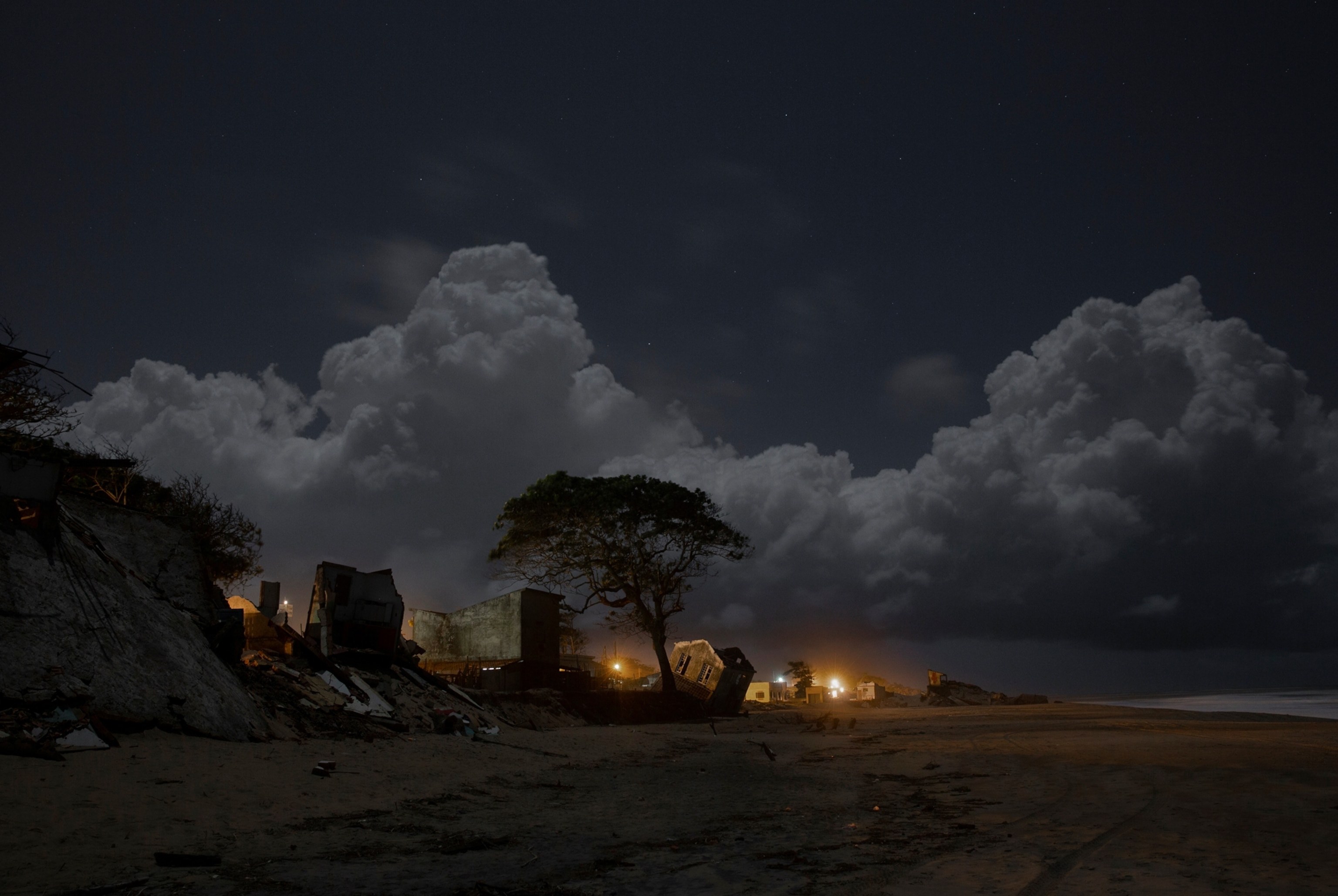
The sea devoured the beach’s historic lighthouse, bars, nightclubs, markets, a four-story hotel, a gas station for boats, a school, sumptuous summer mansions, two churches, and an island where 300 hundred fisher families lived. The Ilha da Convivência (Island of Coexistence), as it was known, was 650 feet from shore. Nenéu was born there in 1974, when islanders, fearing an ocean already on the rise, began moving from Convivência to the continent. Today, the only thing left is a narrow land strip with sad ruins. In all, researchers estimate that the erosion has created over 2,000 environmental refugees here since about 1960.
Many never recover from the trauma of losing their homes. Erica Ribeiro Nunes, 48, has been running from the sea her whole life, she says. The daughter, sister, and wife of fishermen, Nunes has recently been driven once again from her house, this time by a storm surge. Nunes and her family once caught and sold crabs, but the rising sea level killed 90 percent of the crabs’ habitat in Atafona’s mangroves. She saves a little of her $30 monthly government aid inside a Bible and prays to God for it to multiply. Wracked by nightmares, Nunes rarely sleeps well.
“No one knows how it feels to lose everything until it happens. And then you lose everything again. There is no president, no mayor that looks out for us. The truth is nobody cares about Atafona,” she vents, her eyes filled with sorrow.
The Atafona conundrum
The explanation for the rising sea and extreme erosion in Atafona is something that researchers have been trying to unravel since the 1970s. Some locals have their own theories, based on the belief that the beach holds healing powers in its monazite sand.
“There is in Atafona, especially among the old residents, a mixture of mysticism, religion, and science. For them, the ocean is a living being, and the coastal erosion a punishment for errors committed by man, such as having built the old church on the shore with its back facing the ocean,” says civil engineer Gilberto Pessanha Ribeiro, coordinator of the Coastal Dynamics Observatory at the Federal University of São Paulo, which has been researching Atafona for 18 years.
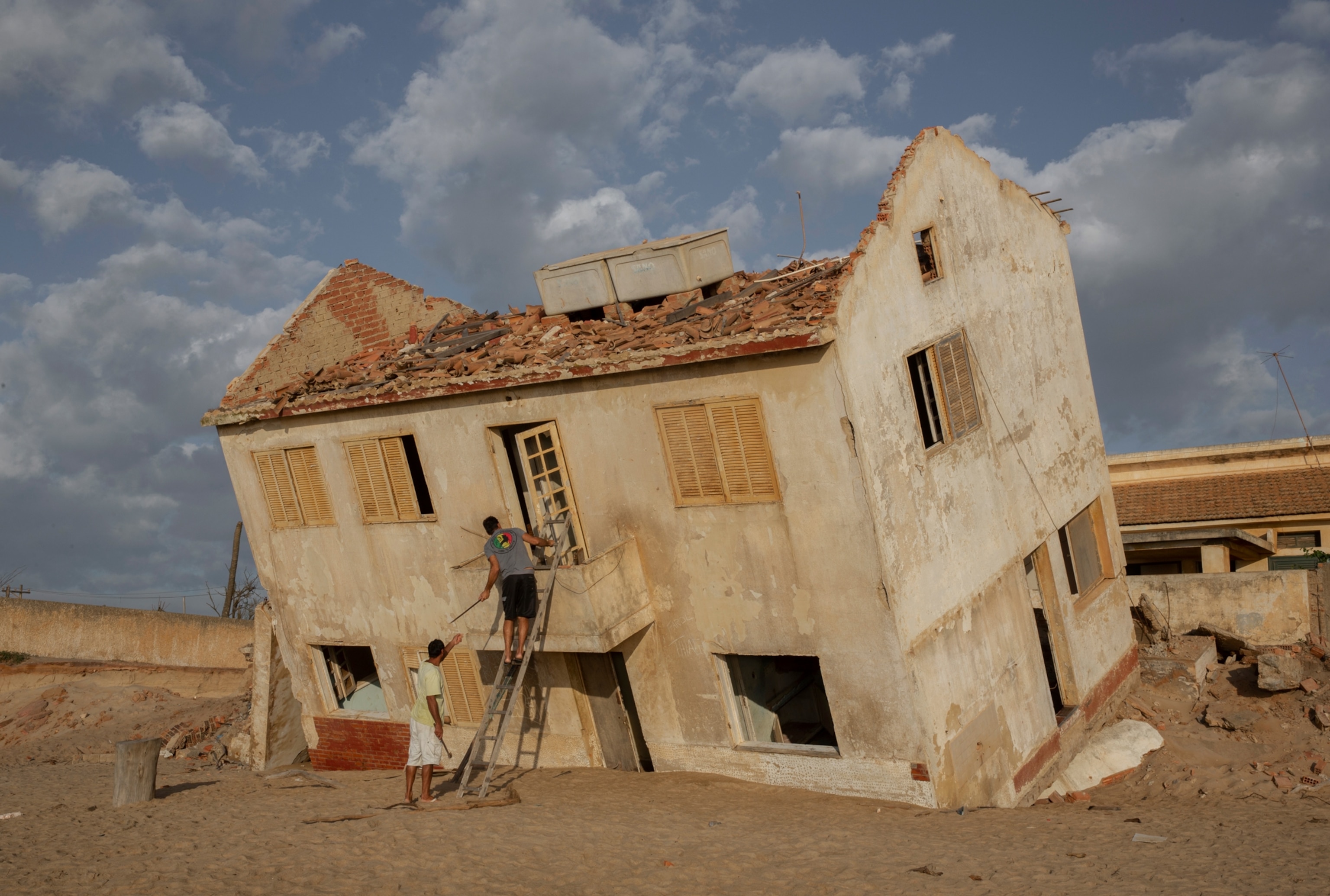

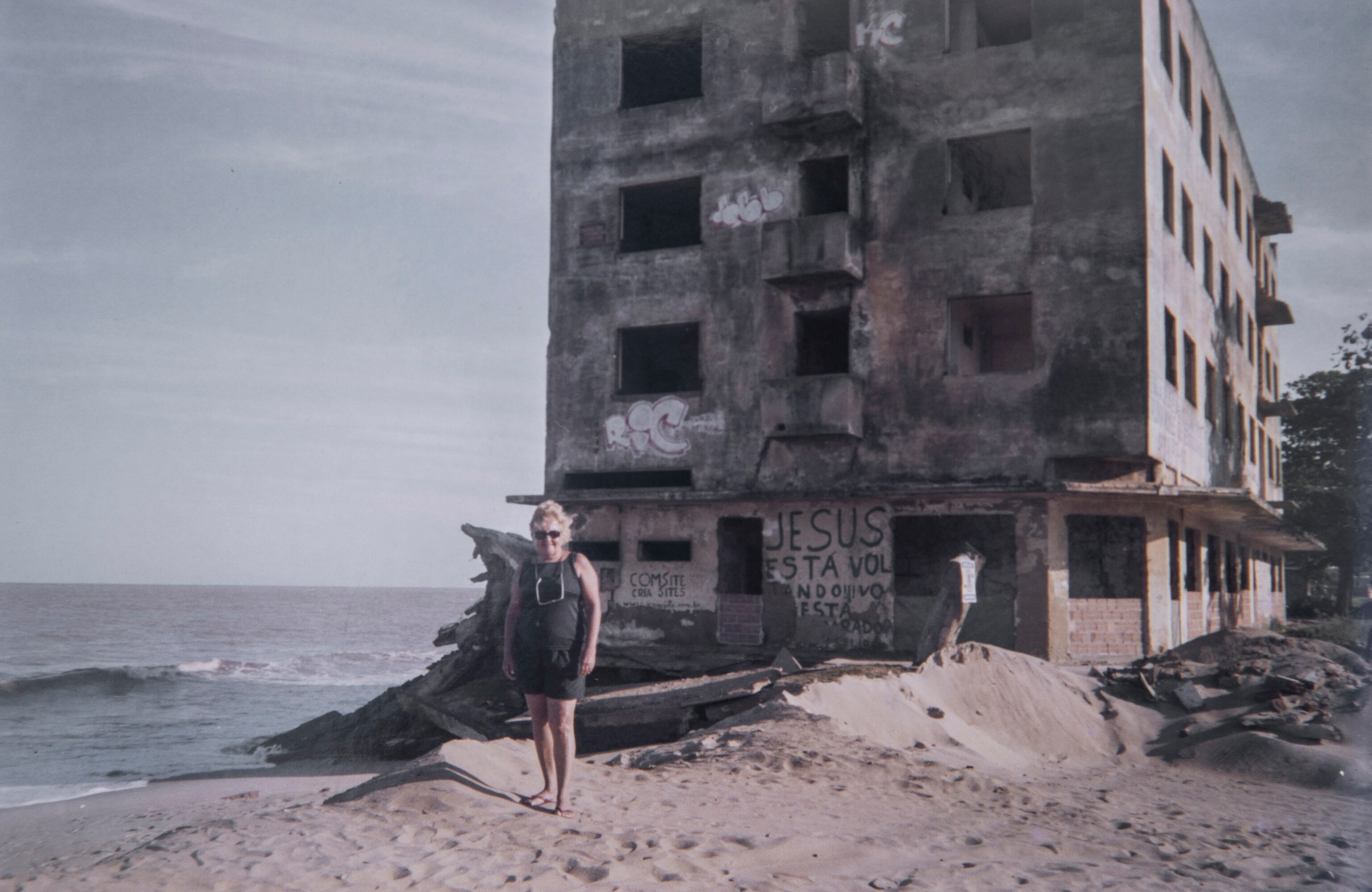
“There is no single explanation,” he says. “We have the climatic changes, but also the regional events: wind influence, wave climate, astronomic tidal effects, (and) transportation of sediment by the coastal currents.”
Scientists believe the convergence of all those factors in one place, unique on the Brazilian coast, helps explain what’s happened in Atafona. But one man-made change in the river’s geology may account for much of it.
Atafona sits at the mouth of the Paraíba do Sul River, the most important waterway in the southeastern region of Brazil, where two of Brazil’s most industrialized and populated cities—São Paulo and Rio de Janeiro—are located. The drainage basin provides water for more than 15 million people in 184 municipalities.
The Paraiba also travels just over 700 miles from its source in Sao Paulo state to the Atlantic Ocean and once carried enough sediment sand to the delta to stabilize the coast and form a natural barrier protecting Atafona from the sea.
But in the late 1950s, 70 percent of the Paraiba’s flow was diverted south to supply water to Rio’s metropolitan area. Dams and other diversion projects by industry and farming also reduced the river’s once-powerful run to the ocean to a fraction of what it was. The diminished sediment and sand load can no longer prevent the Atlantic from eating away Atafona’s beach.
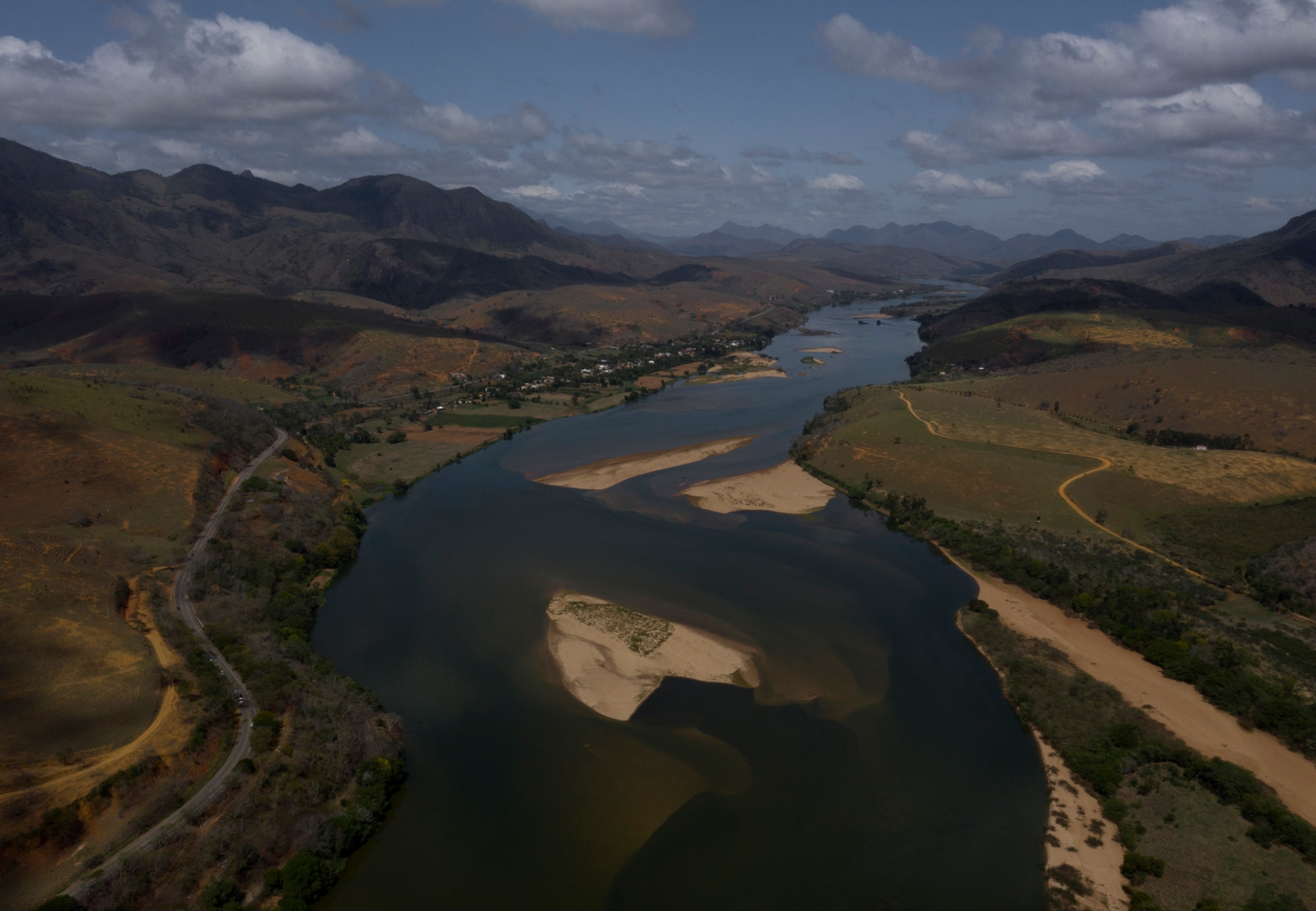
“Rio consumes 44 cubic meters per second, but it is pumped four times more, 160 cubic meters per second. This has been killing the river since the 1960s,” says João Siqueira, secretary general of the Lower Paraíba do Sul Committee. “They guaranteed water to the residents of Copacabana and Ipanema, but evidently when one does this, from an environmental and ecological point of view, it is a disaster. What happens is what we see in Atafona.”
In Atafona, the mouth of the river was once at least 15 feet deep, according to the elder fishermen. Today, it is now just 1.5 feet, and fishing boats can access the ocean only through a narrow canal.
Praying for help
Time seems to pass more quickly in Atafona, since every morning the beach’s landscape has changed a litte. Dunes shift in the direction of the houses, ruins emerge from the sand and others disappear. Every day, fishermen pray that the governor will dredge the river mouth to reopen the navigation canal and construct a breakwater to protect the coast from the force of the waves. A project has been in the planning stage for the last four years but has never materialized for lack of funds.
Another answer could lie just off the beach on the riverbed, says the geographer Eduardo Bulhões, a professor at Fluminense Federal University who has studied the situation for over 10 years. He recommends a solution used in the United States and the Netherlands: replenishing the beach by pumping its own sand, which is accumulating at the bottom of the Paraíba do Sul River, back onshore. “It is a modern response, but (one) that depends on regular maintenance,” says Bulhões.
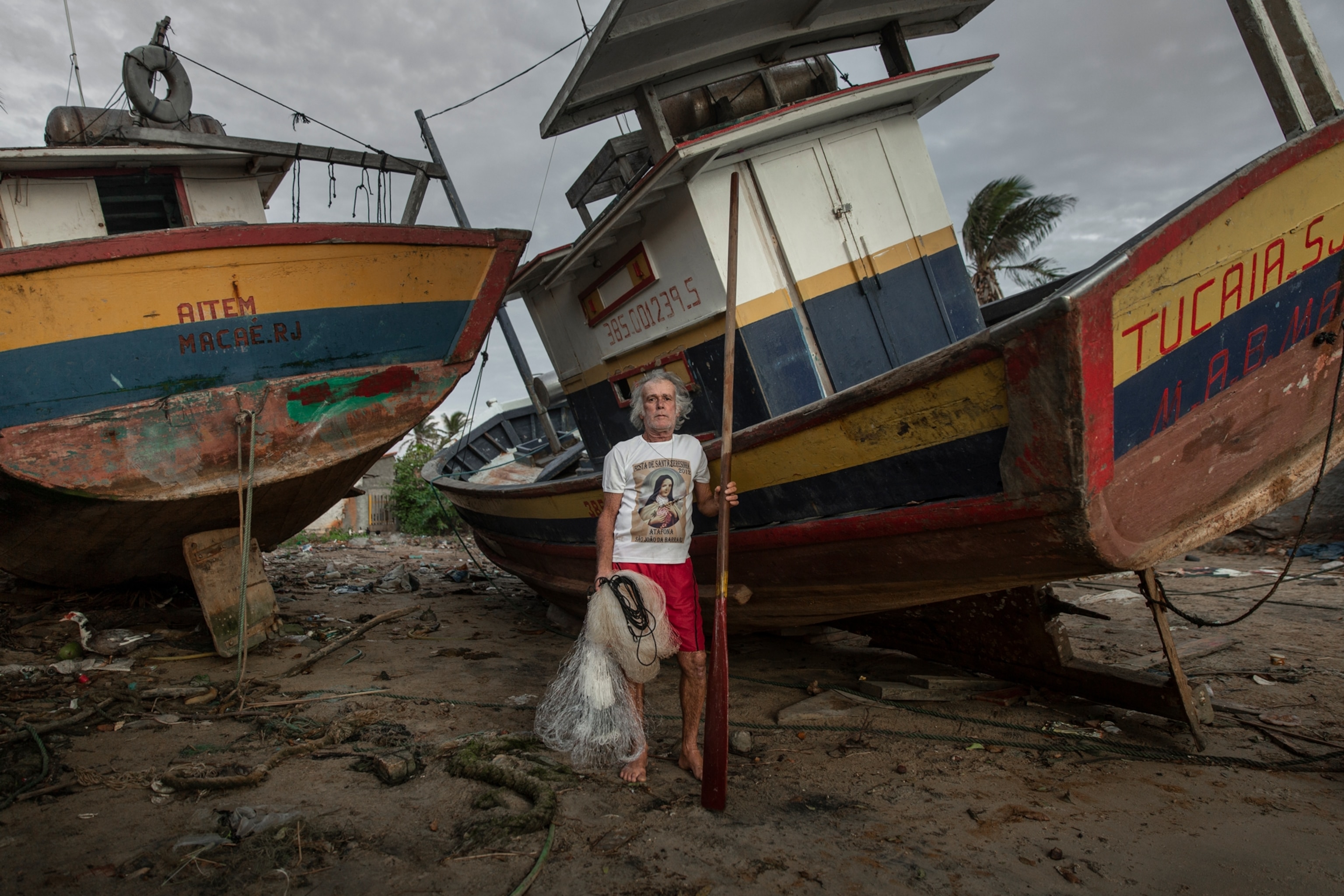
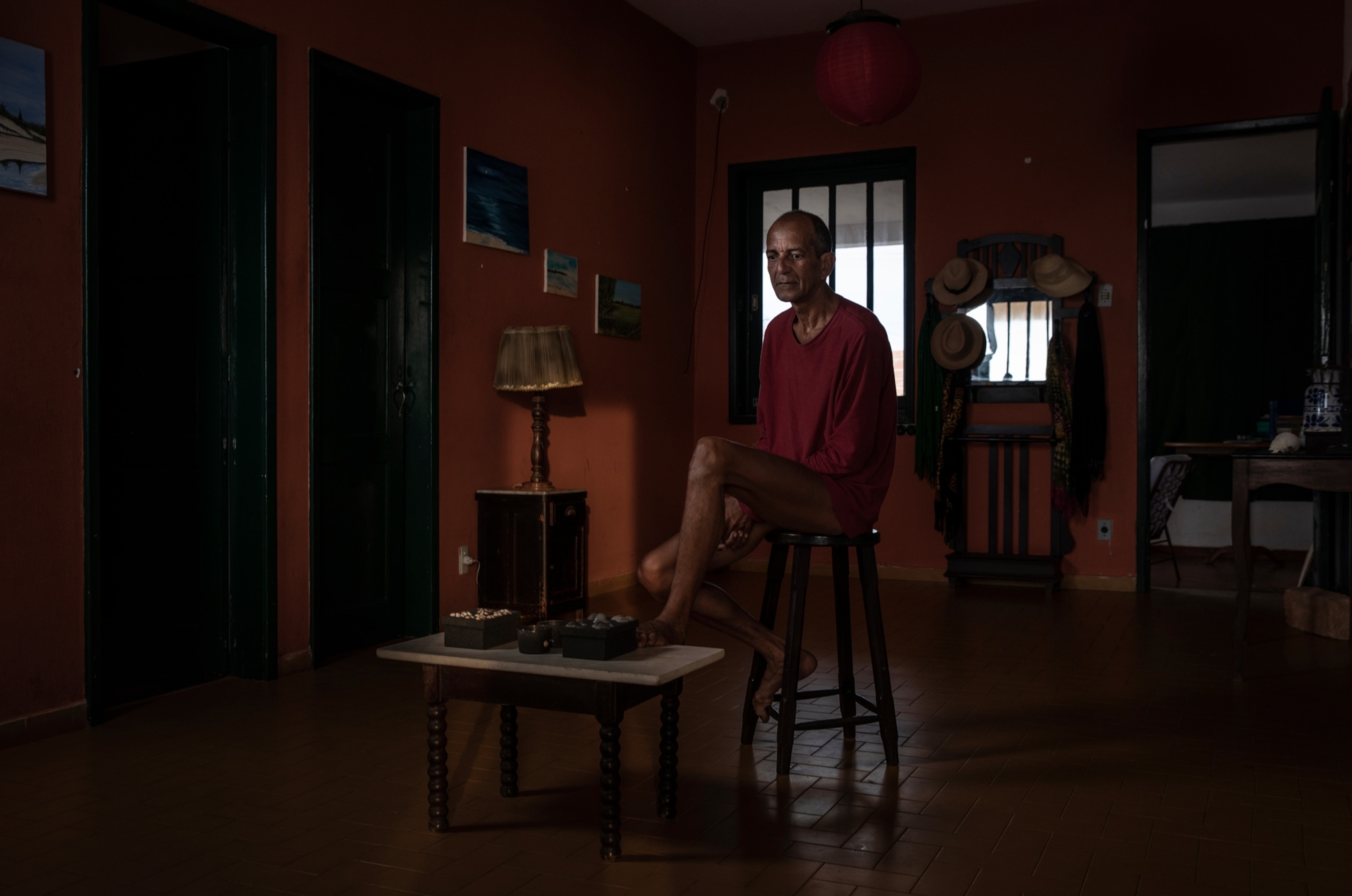
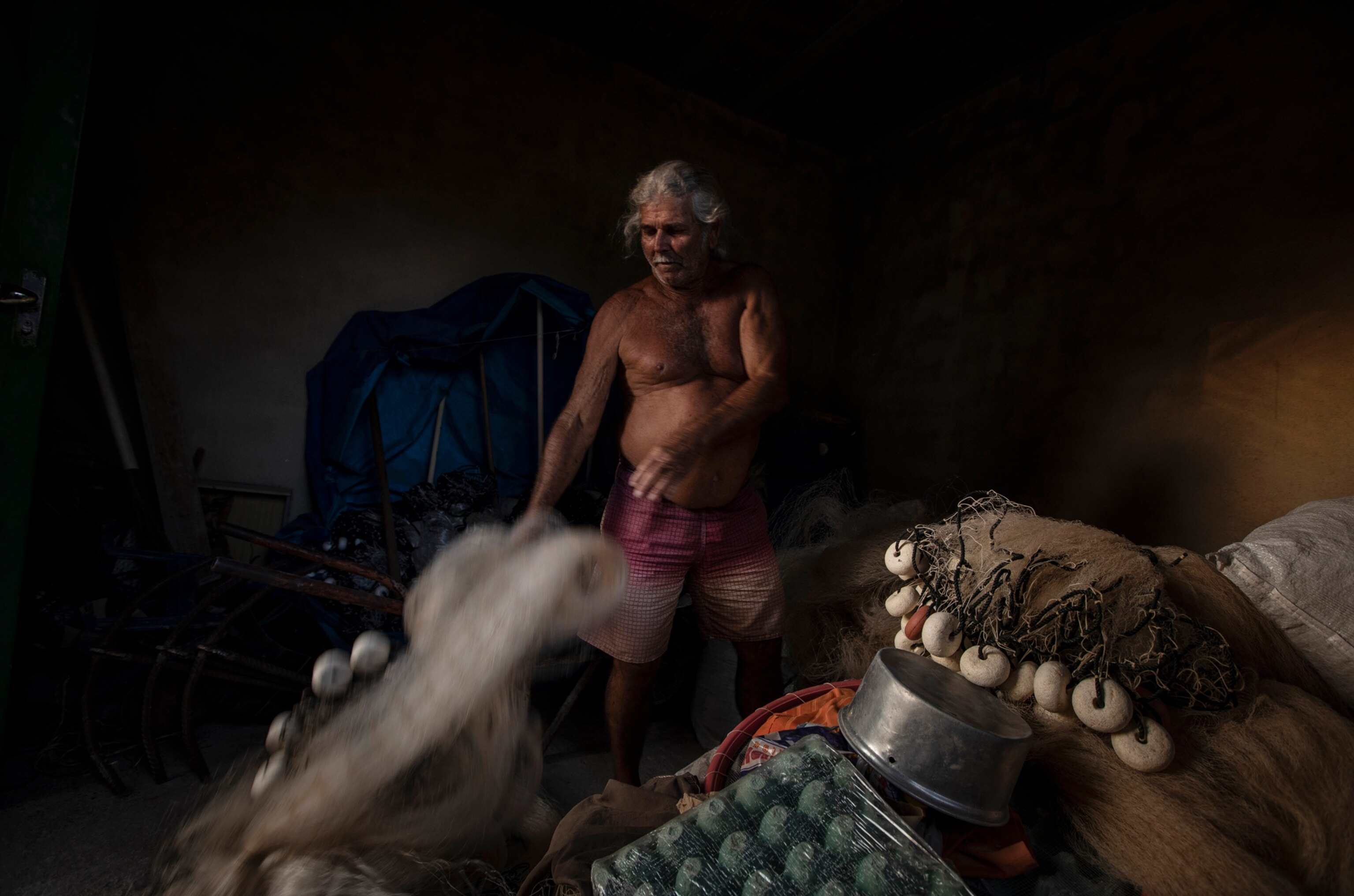
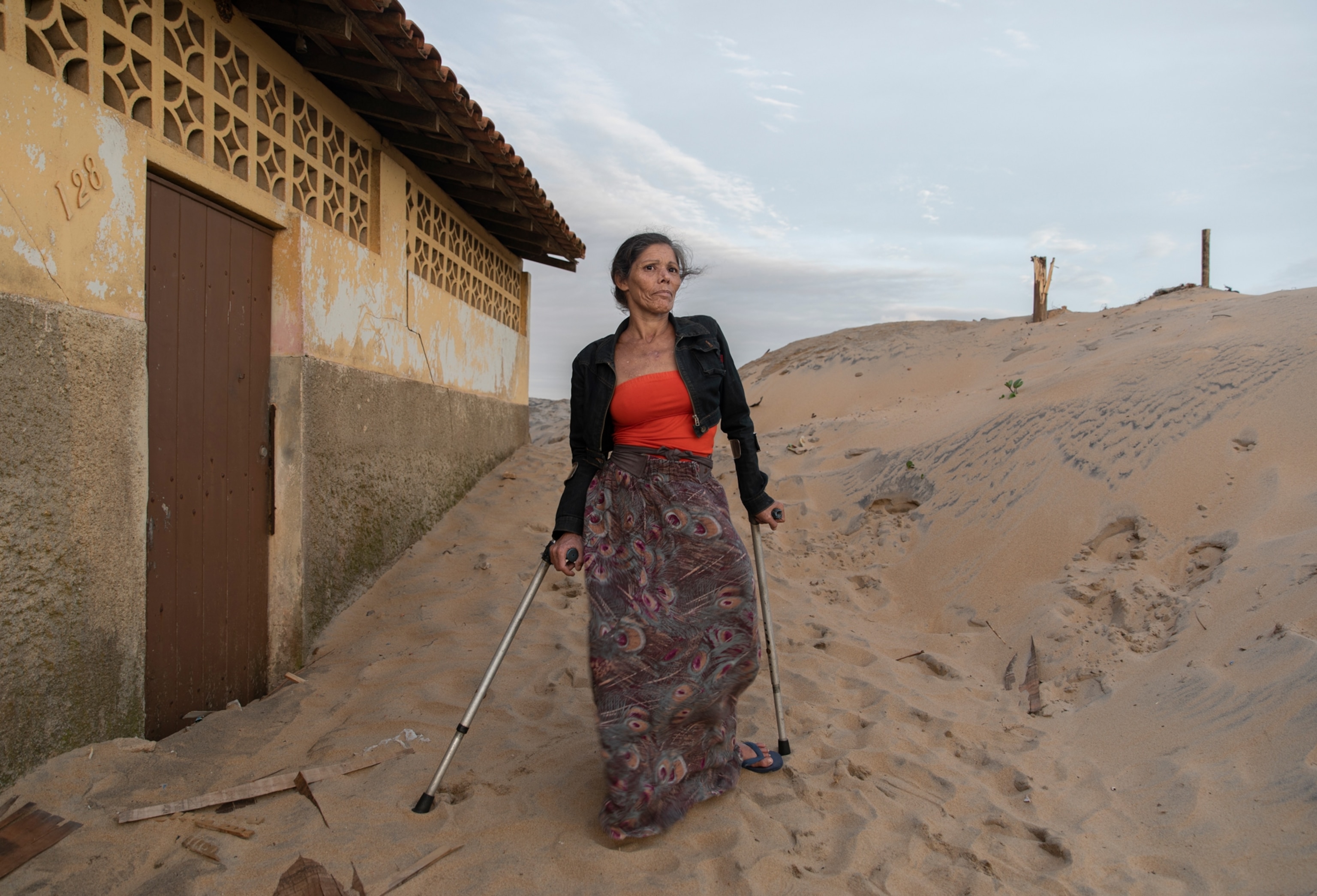
No matter the solution, Nenéu has his own view of the cause.
“Man provoked the revolt of the ocean. The blame is ours,” he says shortly after leaving the water carrying two huge fish. He has a deep respect for the sea, from which he finds his food, work, and his life. “It steals my house, I take its fish. I do not know how to read or write, but this I understand. My only worry is knowing that the waves will continue advancing,” he says.
At the end of the afternoon, Nenéu drinks a cup of coffee while he pets a wounded cat that does not leave his side. His life has changed in the last few years. In the past he would go to sea for an entire month, where he did drugs and drank heavily while he fished. He decided to start a new life after meeting an evangelical pastor.
The two became inseparable—the pastor often has no food and usually eats the fish that Nenéu catches. Every day, they pray in the fisherman’s house. While praying that night, the pastor looks through the window and raises his hands in the direction of the Atlantic Ocean. “We are regretful sinners, Father. We ask for mercy. In the name of Jesus, do not let the sea take this house.”
The National Geographic Society is committed to illuminating and protecting the wonder of our world. Learn more about the Society’s support of its Explorers.

